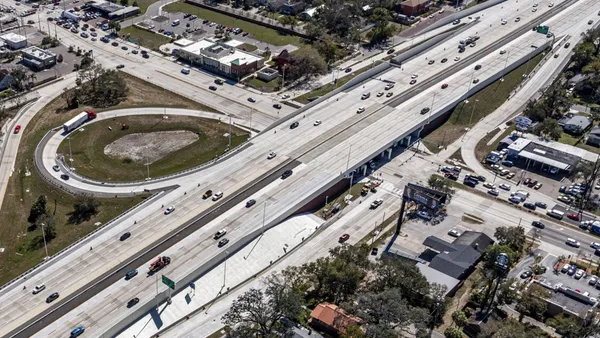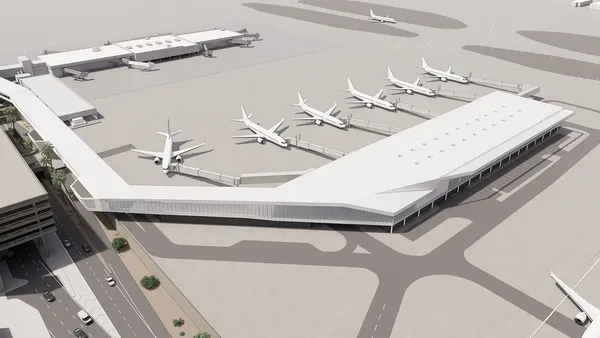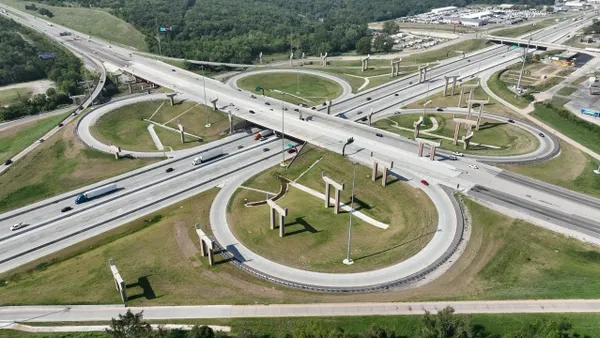Dive Brief:
- On March 22, a speeding motorist crashed into a highway work zone on I-695 in Maryland, killing six construction workers. The incident received nationwide attention, but the Associated General Contractors of America has stated the crash is tragically common.
- “What happened to those workers on March 22 is sadly much closer to the rule than the exception,” said Ken Simonson, AGC chief economist, during a webinar Thursday. More than half (55%) of highway contractors reported motor vehicles crashing into their work zone in the last year, according to an AGC survey.
- The survey accompanies a renewed call to improve awareness of highway jobsites, continue motorist education and increase deterrents for speeding, ahead of an increase of highway projects from the Infrastructure Investment and Jobs Act and summer vacation traffic.
Dive Insight:
AGC released a video highlighting the March 22 crash with interviews from workers with firsthand experience working inches from speeding vehicles.
“I want to go home tonight, just like you want to get where you’re going right now,” Harvey Kline, paving manager for Baltimore-based civil contractor P. Flanigan & Sons, said in the video.
More often than not, it’s motorists who are injured or killed, AGC’s survey found. Seventy-two percent of respondents reported no injuries to construction workers and 92% reported no fatalities, but 59% of respondents reported at least one motorist or passenger injury and 16% reported at least one fatality.
“Most states do too little, or nothing, to educate motorists about work zone safety,” Simonson said. But AGC and others are calling on that to change.
Oklahoma recently became the first state to require new drivers to complete a one-hour, online work zone awareness training prior to receiving a license. That’s a step in the right direction, Simonson said.
But respondents to AGC’s survey agree: the majority think increased police presence, heftier fines, automatic speed cameras and stricter enforcement are key to getting drivers to slow down.
Some states have heeded the call. In Missouri, a law made “endangerment of a highway worker” a crime. Speeding in a work zone in the state could result in fines of $1,000, even if no injury takes place, and up to $5,000 or $10,000 if a worker is injured or killed.
In Pennsylvania, the state DOT’s Automated Work Zone Safety Enforcement program managed to drop work zone speeding by 20%, with 100 fewer crashes and a 25% drop in fatal work zone crashes.
“In many cases, vehicle speeding contributes to these crashes in work zones,” said Steve McGough, president and CEO of construction software provider HCSS, which cosponsored the survey. “Utilizing speed cameras with a zero-tolerance policy would go a long way to protect the traveling public and our workforce.”














